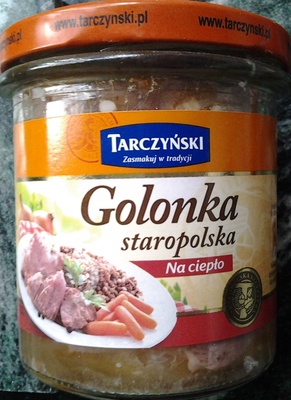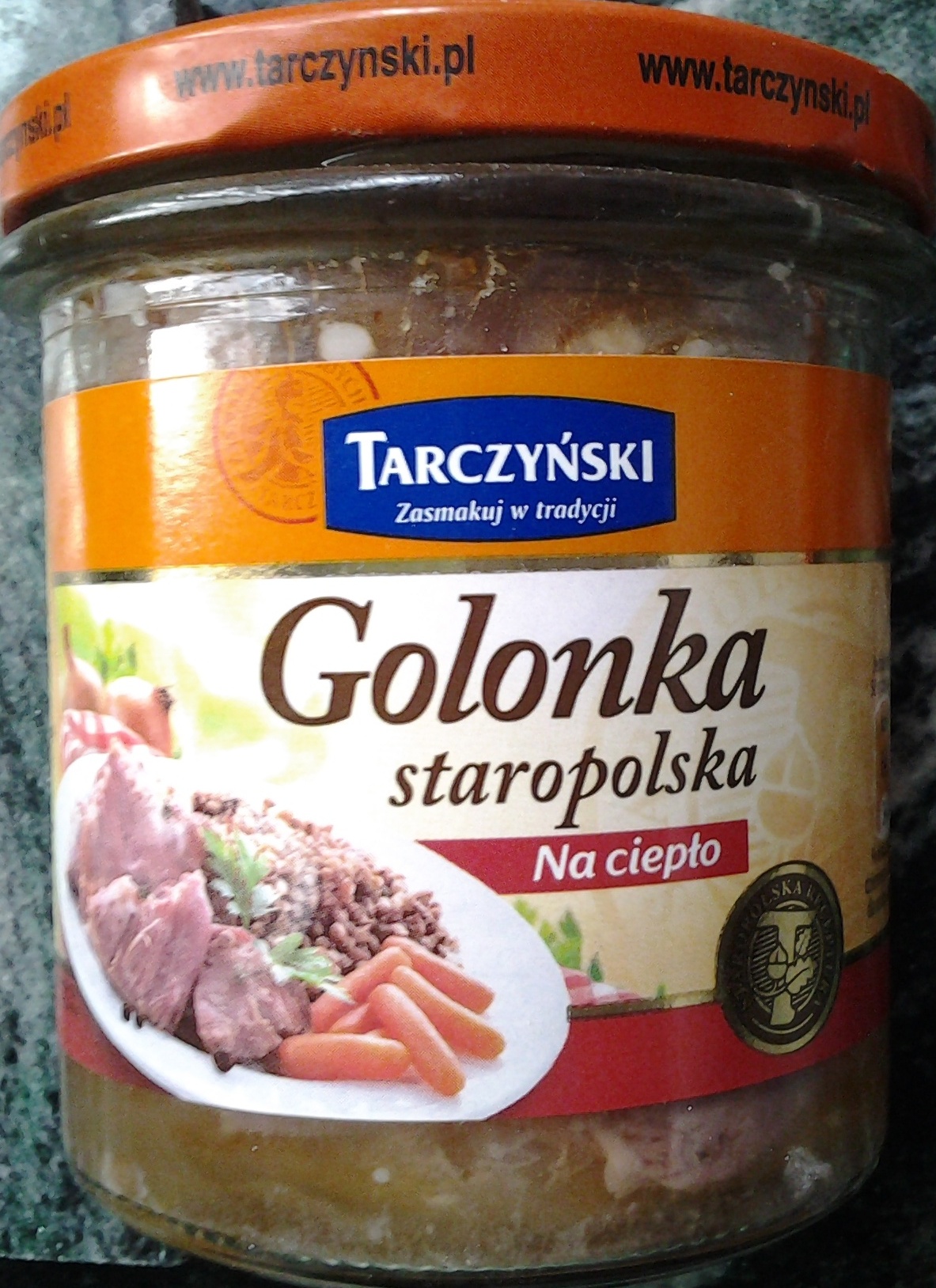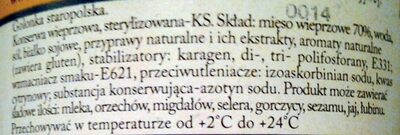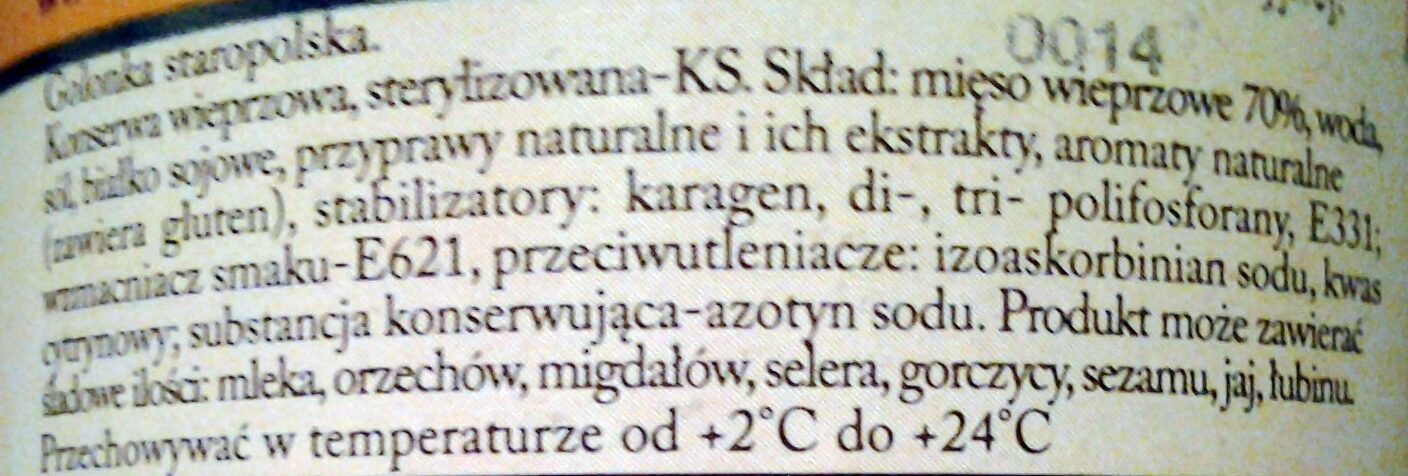Golonka staropolska na ciepło - Tarczyński - 280 g
This product page is not complete. You can help to complete it by editing it and adding more data from the photos we have, or by taking more photos using the app for Android or iPhone/iPad. Thank you!
×
Barcode: 5908230507229 (EAN / EAN-13)
Common name: Golonka
Quantity: 280 g
Brands: Tarczyński
Categories: Meats and their products, Meats, Pork and its products, Pork, pl:Golonka
Manufacturing or processing places: PL 55-100, Trzebnica, Polska
Link to the product page on the official site of the producer: http://www.tarczynski.pl










